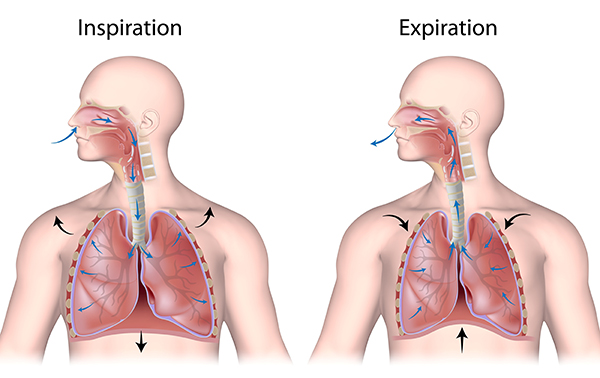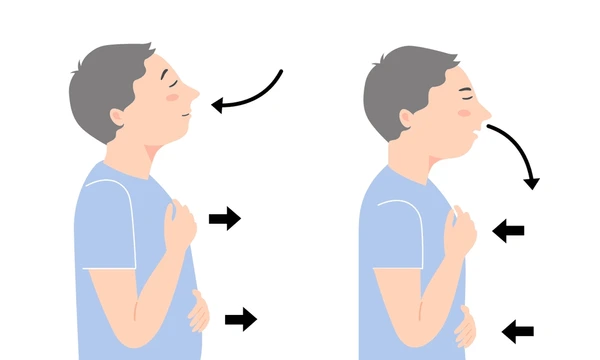we all are curious about how we inhale and exhale so effortlessly. There is science behind how we inhale and exhale and how our body coordinate with this mechanism of breathing ? Science behind breathing is based on pressure and volume relation. How our body manages to maintain the pressure and volume for proper breathing let’s talk about it.
Principle of Breathing
Breathing involves two stages Inspiration in which we inhale & Expiration in which we exhale. The movement of air from inside and outside of the lungs is perform by creating pressure difference between lungs and the atmosphere. Air moves from high pressure to low pressure. Inspiration occurs when pressure in the lungs is less than the atmospheric pressure. Similarly Expiration occurs when pressure in the lungs is more than the atmospheric pressure. We cannot change the atmospheric pressure so how our body is shifting its pressure and volume for breathing? There are muscles like diaphragm and specialised set of muscles called external and internal intercostal muscles between the ribs that helps in creating pressure and volume difference.

The contraction of Diaphragm muscle increases the volume of thoracic cavity vertically and the contraction of external intercostal muscle lifts up the Ribs and sternum which increases the volume horizontally. The increase in the volume of lungs decreases pressure in the lungs, which will cause air from outside to move in the lungs that is Inspiration. Relaxation of diaphragm and external intercostal muscles causes decreases volume and increases pressure in the lungs which causes air to move outside from the lungs that is Expiration.
Can we increase our Lung Capacity ?
Yes, we have the ability to increase our strength of inspiration and expiration. With the help of our additional abdominal muscles that is our diaphragm.

On an average, A heathy human breathes 12-16 times per minute. The volume of air in breathing movements can be measured by using a device Spirometer. Spirometer helps in clinical examination of lungs/pulmonary functions.
How can we Increase our Lung Capacity ?
The answer to this question is to practice different types of pranayama. Nadi-shodhan, breath holdings, practicing long exhalations, yogic breathings these are few practices that can help you to improve strength and capacity/quality of breathing. Chanting long Om also helps in increasing lung capacity.
How much we Inhale and Exhale?
A heathy human can inhale/exhale approximately 500 ml per inhalation involuntarily it means without force. If we inhale forcefully we can inhale upto 2.5 litre to 3 litre per inhalation. If we exhale forcefully we can exhale upto 1 litre to 1.1 litre per exhale.
There is always air present in our lungs even after forceful exhalation. This is average 1100ml to 1200ml. This remaining air prevent lungs from collapsing.
